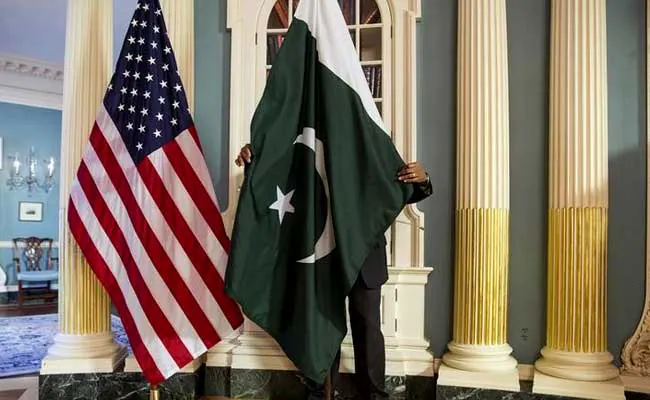A Historic Lunch with a Hidden Agenda
Field Marshal Asim Munir’s luncheon with former U.S. President Donald Trump might appear on the surface to be symbolic diplomacy. But for those who understand Washington’s transactional nature—especially under Trump—there’s no such thing as a “free lunch.” For Munir, the optics of the meal matter less than the leverage it offers in a rapidly evolving geopolitical landscape.
While Islamabad might hail this as a historic moment of “culinary diplomacy,” the truth is stark: this was a power play. Munir understands the art of the ask—and even more so, the cost of the answer. With the U.S. stepping up its confrontation with Iran, and Israel already escalating attacks, Pakistan’s strategic location is again gaining value. And Munir knows how to extract returns.
History Repeating Itself—Almost Word for Word
Back in December 1959, then-General Ayub Khan also courted a U.S. President—Dwight D. Eisenhower—with a familiar script. Kashmir, India’s aggression, the threat of communism, and Pakistan’s strategic vulnerability were all laid out to gain American favor. Swap “communism” for “China” and you’ve practically got Munir’s current brief to Trump.
Eisenhower, for his part, got Ayub to agree to a U.S. spy base in Peshawar to monitor Soviet activities. Sound familiar? Pakistan’s past deals with the U.S. have often hinged on strategic utility—and this time, it’s Iran, not Russia, in the crosshairs.
A Calculated Performance by Munir
Munir’s suggestion to nominate Trump for the Nobel Peace Prize was pure theatre—meaningless in impact, yet potent in flattery. Trump may be unpopular among global allies, but flattery opens doors, and Munir came prepared.
Notably, this wasn’t a full delegation visit. Only two senior U.S. officials—Secretary of State Marco Rubio and Special Middle East Representative Steve Witcoff—were present, along with Pakistan’s ISI Chief, General Asim Malik. No civilian aides. The message? This was military-to-military, intelligence-to-intelligence business.
Iran, Intelligence, and the Pakistan Pivot
The agenda revolved around Iran. With another U.S. carrier group entering the Persian Gulf, and war drums beating louder, America is quietly scouting partners. Launching operations—especially covert ones—into Iran requires proximate land bases, not naval ships.
And who better than Pakistan, a country that has been quietly surveilling Iran for years? Covert support, intelligence sharing, logistical corridors—all are back on the table. Even as Pakistan’s civilian leadership pledges neutrality, Munir is poised to play the double game once more.
What Munir Really Wants: Money, Power, and Immunity
Field Marshal Munir isn’t just securing strategic relevance—he’s gunning for renewed financial lifelines. The U.S. paid Pakistan $33.4 billion during the Afghan war years. That tap dried up with the troop withdrawal, dropping to just $173 million by 2024.
Pakistan’s generals haven’t forgotten the perks: inflated reimbursements, defense funding funneled into personal luxuries, and American dollars used to pay back Chinese debt. With mounting economic pressure and rising defense costs, especially following skirmishes with India, Munir wants that cash flow revived.
Terrorism as Strategy, Not Flaw
With Indian Prime Minister Narendra Modi declaring terrorism as “an act of war,” Pakistan’s support for extremist groups gains renewed attention. For Islamabad, maintaining a low flame of militancy offers both strategic depth and plausible deniability. Post-26/11, U.S. military presence in Pakistan served as a buffer against India’s retaliation.
Now, as India threatens to continue ‘Operation Sindoor,’ American boots on Pakistani soil again offer a convenient shield. But that also means Pakistan may permit more terror operations, not fewer, to maintain its leverage with both Washington and Beijing.
China, the Complication in Munir’s Plan
The wild card? China.
Unlike in the Cold War era, today’s U.S. enemy isn’t just Iran—it’s China. And China is actively supporting Tehran. Beijing’s aid flights to Iran have raised eyebrows in Washington and put Pakistan in a tight spot. If Islamabad offers too much support to the U.S., it risks alienating its all-weather friend and biggest creditor.
This is a precarious dance for Munir: align too much with Trump, and risk Chinese backlash. Stay too loyal to Beijing, and the U.S. might look elsewhere for regional partners. But if anyone has mastered this geopolitical tightrope, it’s Pakistan’s military.
The Civilian Government? Just a Bystander
Shahbaz Sharif’s relevance is now mostly ceremonial. Munir runs the show—without apology or pretenses. His grip on power is firm, his style quiet but ruthless. He’s jailed political opponents, defanged his intelligence rivals, and neutralized dissent.
As war clouds gather over the Gulf and tensions simmer with India, Field Marshal Munir positions himself not just as Pakistan’s military leader—but its most indispensable man. One who can barter with world powers while keeping the home front on a leash.
Conclusion: No Free Lunches—Only Power Plays
Munir’s Washington lunch may have seemed simple. But behind every handshake lies a strategy. The U.S. needs allies near Iran. Pakistan needs money, power, and international validation. The dance is dangerous, but it’s one Pakistan has mastered across decades.
For Munir, the message is clear: Pakistan is back in play. And this time, the stakes are nuclear.



